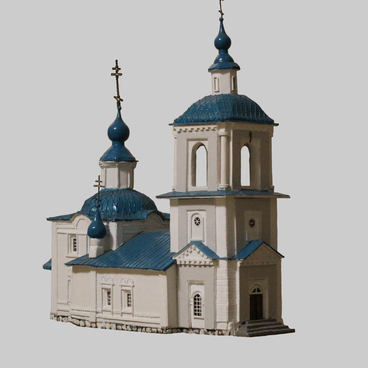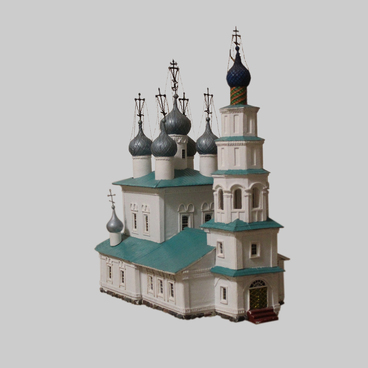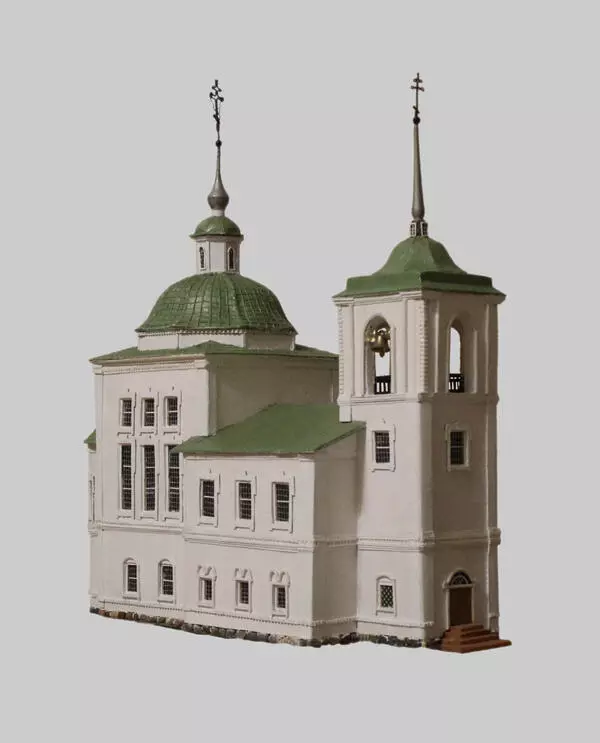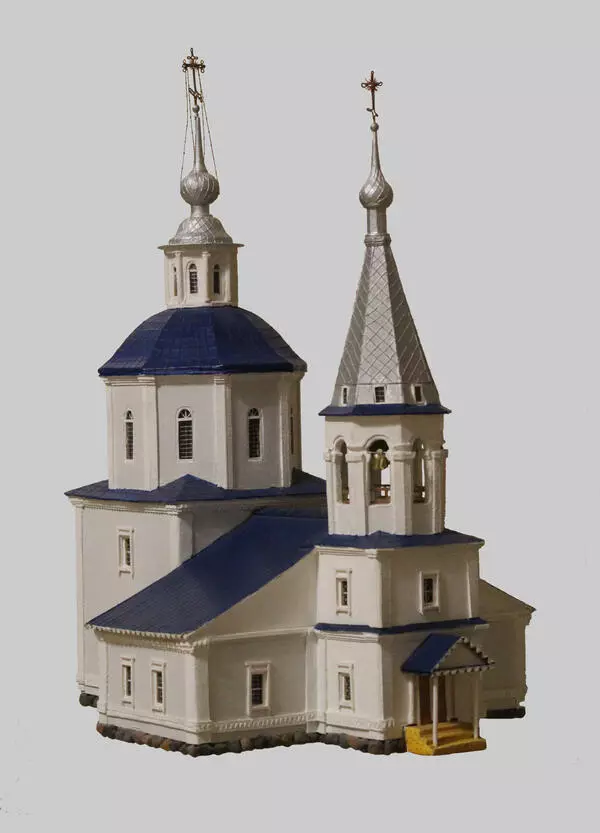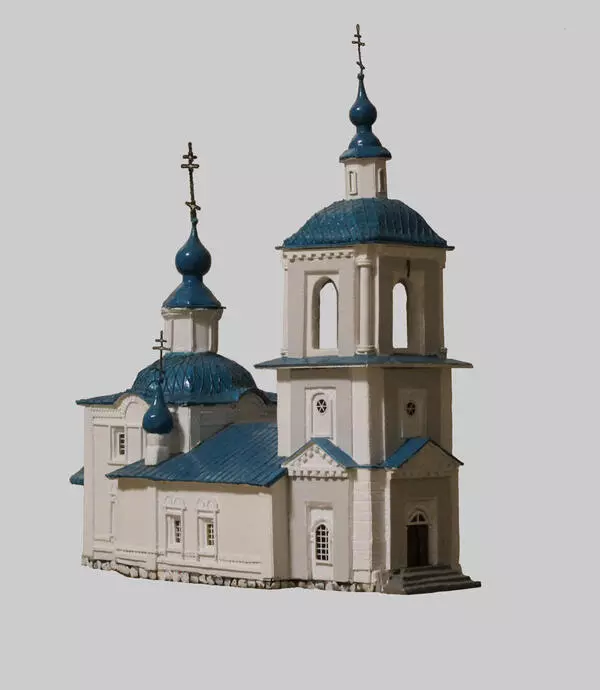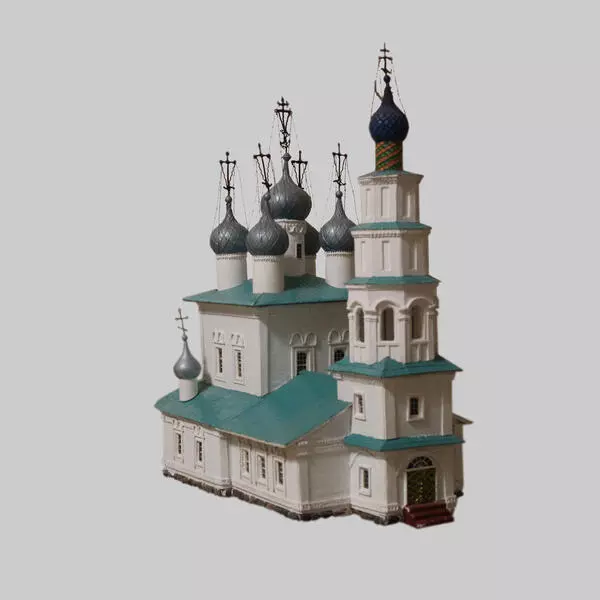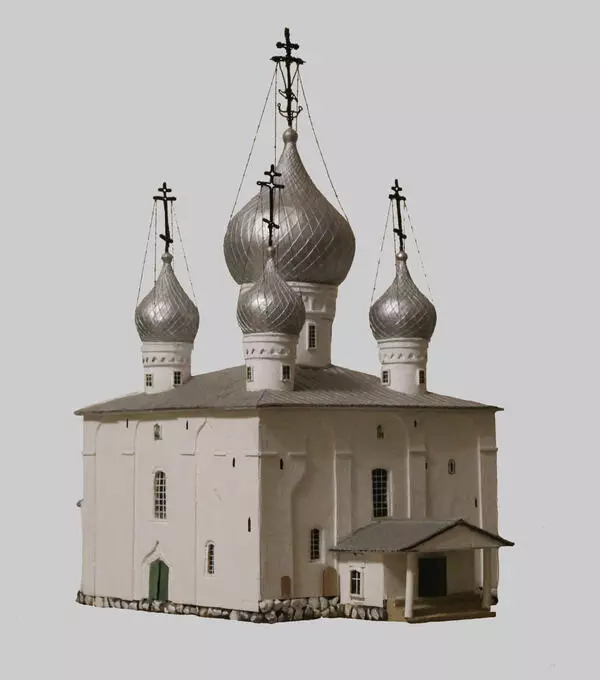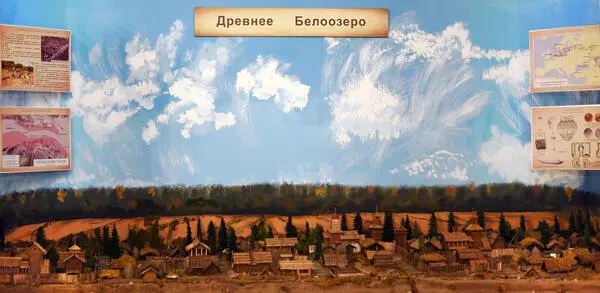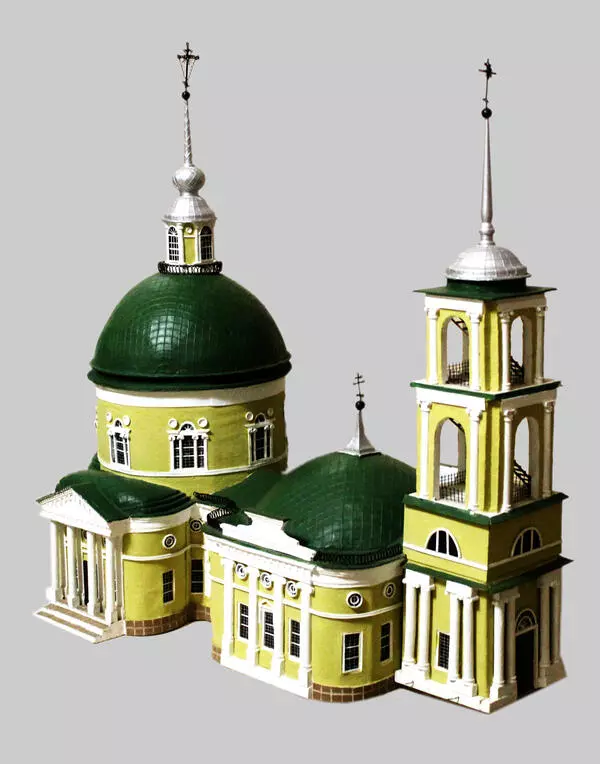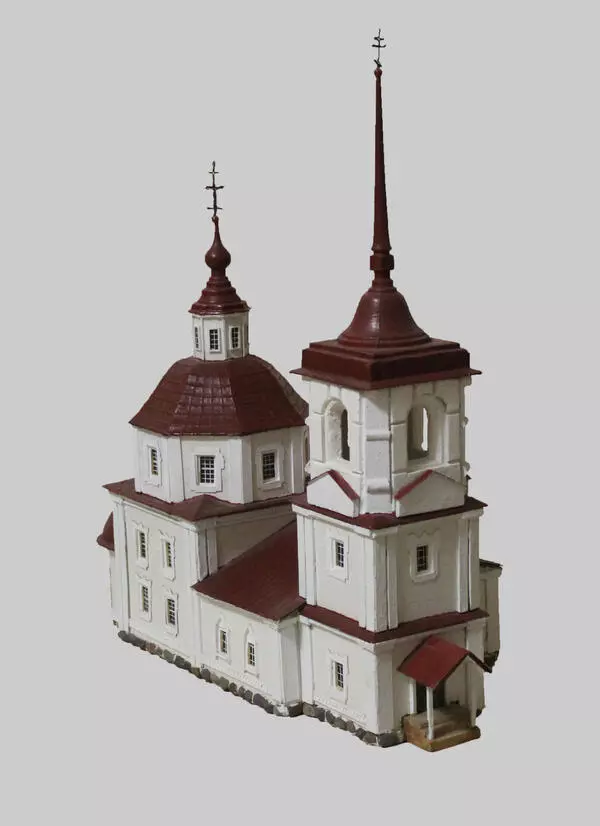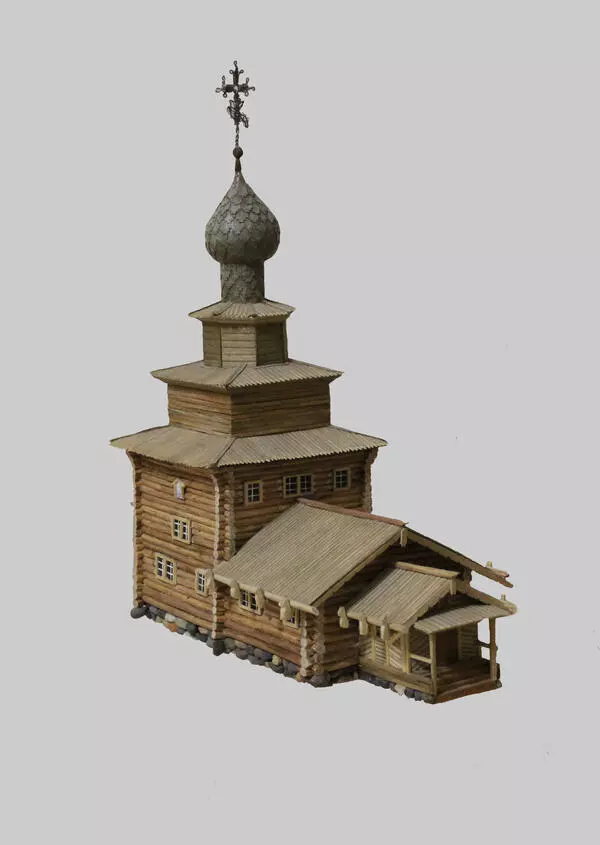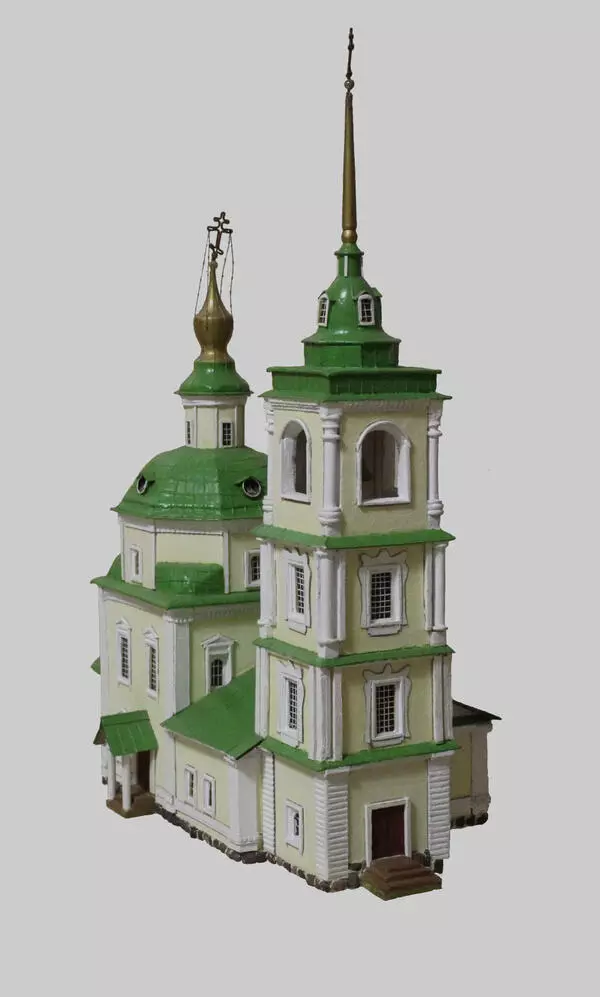Temple of the All-Merciful Savior was built in 1716–1723. The site of the temple until 1612 was occupied by the St. Andrew’s Monastery. There were two temples on the territory of the monastery: the Church of Andrew the Apostle and the Church of Origin of the Honest Cross of the Lord with the side-alter of the Meeting of Jesus Christ, as well as 12 monastic cells. In 1612 the monastery was “burned by Lithuanian people”. By the second half of the 17th century, a new temple was built in the name of the “Origin of the Honest and Life-giving Cross of the Lord”. The church was wooden, tent-shaped, with a refectory and a parvis, lined with thin planks - wooden boards of a special form. There were six bells on the bell tower, weighing 20 poods or 330 kilograms, and a clock. The church was built with donations from the parishioners. The church priest was Alexei Sadofov. In 1693 the parish numbered 41 people.
In the everyday use the church of All-Merciful Savior was called “Savior at the foot of the hill”. After the construction of the Belozersky Bypass Canal in 1846, it received an unofficial name, under which is best known and now - “Savior on the Canal”.
In 1753, after a great fire, the original interior of the temple was completely lost. The temple was restored in 1755.
The bell tower was a sort of a beacon for fishing and commercial vessels. Both the bell tower and the head are crowned with forged lacework crosses. On the lower cross bar, made in the form of a crescent with horns upwards, one can discern the year of installation of the central cross - 1783.
The church has five heads, they’re crowning a four-slope roof. Only the central drum provides lighting and has windows. The rest of the windows are false, blind. The upper part of the temple is decorated with special architectural elements – kokOshniki – that is corbel arches -- they are arranged checkerwise, as well as a double belt of Dutch tile possibly made in the Great UstyUg. The low altar with high bell shaped roof in Baroque style is topped with a small head.
The interior of the temple still has preserved remnants of paintings with magnificent Baroque stucco.
In the 1930s, the temple was closed. The building was used for workshops, a bakery, a gymnasium, and was later placed under the control of the museum. Restoration work began in the 1970s. From 1988 to the early 1990s, a group of Moscow engineers led by KonstantIn KozlOv built a special system that diverts groundwater from the foundation. In 2011-2012, by the Town Day of Belozersk, the Church of All-Merciful Savior was completely renovated.
In the everyday use the church of All-Merciful Savior was called “Savior at the foot of the hill”. After the construction of the Belozersky Bypass Canal in 1846, it received an unofficial name, under which is best known and now - “Savior on the Canal”.
In 1753, after a great fire, the original interior of the temple was completely lost. The temple was restored in 1755.
The bell tower was a sort of a beacon for fishing and commercial vessels. Both the bell tower and the head are crowned with forged lacework crosses. On the lower cross bar, made in the form of a crescent with horns upwards, one can discern the year of installation of the central cross - 1783.
The church has five heads, they’re crowning a four-slope roof. Only the central drum provides lighting and has windows. The rest of the windows are false, blind. The upper part of the temple is decorated with special architectural elements – kokOshniki – that is corbel arches -- they are arranged checkerwise, as well as a double belt of Dutch tile possibly made in the Great UstyUg. The low altar with high bell shaped roof in Baroque style is topped with a small head.
The interior of the temple still has preserved remnants of paintings with magnificent Baroque stucco.
In the 1930s, the temple was closed. The building was used for workshops, a bakery, a gymnasium, and was later placed under the control of the museum. Restoration work began in the 1970s. From 1988 to the early 1990s, a group of Moscow engineers led by KonstantIn KozlOv built a special system that diverts groundwater from the foundation. In 2011-2012, by the Town Day of Belozersk, the Church of All-Merciful Savior was completely renovated.


